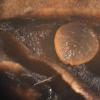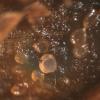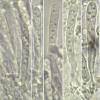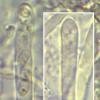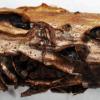
15-12-2025 21:11
 Hardware Tony
Hardware Tony
Small clavate hairs, negative croziers and IKI bb

15-12-2025 07:09
 Danny Newman
Danny Newman
indet. Rutstroemiaceae sp. on unk. fallen leavesMc

15-12-2025 15:54
 Johan Boonefaes
Johan Boonefaes
Unknown anamorph found on the ground in coastal sa

15-12-2025 15:48
 Danny Newman
Danny Newman
Melanospora cf. lagenaria on old, rotting, fallen

15-12-2025 07:05
 Danny Newman
Danny Newman
Pseudosclerococcum golindoi (det: Zotto)near Cosb

15-12-2025 11:49
 Danny Newman
Danny Newman
ITS sequences from the following two collections B

15-12-2025 12:34
 Danny Newman
Danny Newman
indet. Rhytismataceae on oak leafnear Purchase Roa

09-12-2025 12:06
 Andgelo Mombert
Andgelo Mombert
Bonjour,Je recherche l'article concernant Hypobryo
Orbilia eucalypti/coccinella ?
Chris Yeates,
27-01-2013 18:58
 Bonsoir tous
Bonsoir tousfound on an attached Quercus twig, growing on old Colpoma quercinum; I am pretty sure that I have collected this before (lower image, with more abundant apothecia); the confused nomenclature does not help - am I correct in thinking that this is what would be now called Orbilia eucalypti? The spore dimensions - 3.8-4.5 x 2.1-2.6µm match O. coccinella here: http://www.librifungorum.org/Image.asp?ItemID=36&ImageFileName=SyllogeFungorum8-628.jpg further down the page the spore dimensions for O. eucalypti seem to be larger . . . .
any help welcome
amitiés
Chris
Hans-Otto Baral,
27-01-2013 20:34

Re : Orbilia eucalypti/coccinella ?
Hi Chris
yes, it is quite typical O. eucalypti. The type of O. coccinella has reniform (C-shaped) spores, and eucalypti is the oldest available name. The species is actually frequent also in SW-Australia.
Brian Spooner sent me mayn years ago just such collection on Coploma quercinum. But this seems accidental rather than a constant connection. O. eucalypti is plurivorous.
If you tell me the place I will take up the nicely documented collection.
Zotto
yes, it is quite typical O. eucalypti. The type of O. coccinella has reniform (C-shaped) spores, and eucalypti is the oldest available name. The species is actually frequent also in SW-Australia.
Brian Spooner sent me mayn years ago just such collection on Coploma quercinum. But this seems accidental rather than a constant connection. O. eucalypti is plurivorous.
If you tell me the place I will take up the nicely documented collection.
Zotto
Hans-Otto Baral,
27-01-2013 20:34

Re : Orbilia eucalypti/coccinella ?
Hi Chris
yes, it is quite typical O. eucalypti. The type of O. coccinella has reniform (C-shaped) spores, and eucalypti is the oldest available name. The species is actually frequent also in SW-Australia.
Brian Spooner sent me mayn years ago just such collection on Coploma quercinum. But this seems accidental rather than a constant connection. O. eucalypti is plurivorous.
If you tell me the place I will take up the nicely documented collection.
Zotto
yes, it is quite typical O. eucalypti. The type of O. coccinella has reniform (C-shaped) spores, and eucalypti is the oldest available name. The species is actually frequent also in SW-Australia.
Brian Spooner sent me mayn years ago just such collection on Coploma quercinum. But this seems accidental rather than a constant connection. O. eucalypti is plurivorous.
If you tell me the place I will take up the nicely documented collection.
Zotto
Chris Yeates,
27-01-2013 21:10

Re : Orbilia eucalypti/coccinella ?
many thanks for that Zotto - details are:
small woodland area, Edgerton, Huddersfield, West Yorkshire
53°39'23.59"N
1°48'25.58"W
145 metres O.D.
05 January 2013
specimen - Herb. CSVY/F/2272
small woodland area, Edgerton, Huddersfield, West Yorkshire
53°39'23.59"N
1°48'25.58"W
145 metres O.D.
05 January 2013
specimen - Herb. CSVY/F/2272
this is very close to where I recorded Hymenoscyphus aesculi: http://www.ascofrance.com/search_forum/19553 - the KMZ file on that thread takes you to the site in Google Earth
vielen Dank und die besten Wünsche
Chris
Hans-Otto Baral,
27-01-2013 21:41

Re : Orbilia eucalypti/coccinella ?
thanks, that is for me the same place :-)
I overlooked your remark on the type of eucalypti. here a short excerpt of my discussion:
(1) spores 7 × 3.5 µm (an error for 7 × 2.5 µm, according to the sketch in the type convolute in K). .... the asci are with †60–70 µm extraordinarily long, .... and the spores 5.2-7 x 2.1-2.4 µm.
(2) In a rather small apothecium of the holotype the asci and spores were found much smaller than in the large ones (asci †30–38 × 3–3.2 µm, spores †4 × 1.8 µm)
It remains unclear if the type is a mixtum of too very closely related taxa or only one variable species. But O. eucalypti as we apply the name is in fact very variable in spore and ascus size.
Zotto
I overlooked your remark on the type of eucalypti. here a short excerpt of my discussion:
(1) spores 7 × 3.5 µm (an error for 7 × 2.5 µm, according to the sketch in the type convolute in K). .... the asci are with †60–70 µm extraordinarily long, .... and the spores 5.2-7 x 2.1-2.4 µm.
(2) In a rather small apothecium of the holotype the asci and spores were found much smaller than in the large ones (asci †30–38 × 3–3.2 µm, spores †4 × 1.8 µm)
It remains unclear if the type is a mixtum of too very closely related taxa or only one variable species. But O. eucalypti as we apply the name is in fact very variable in spore and ascus size.
Zotto
